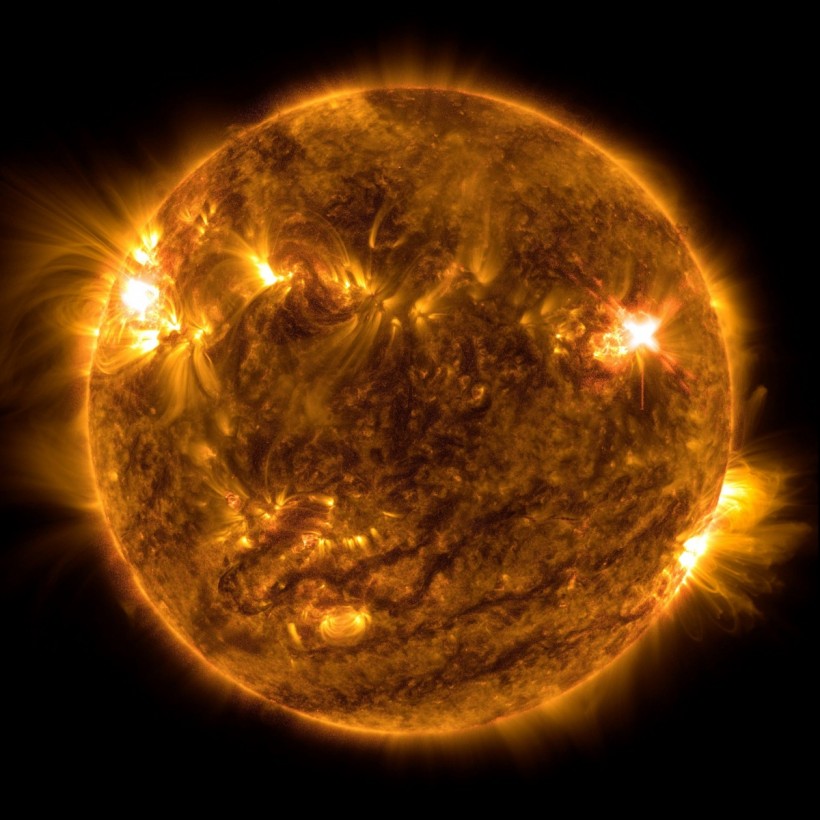NASA managed to capture the Sun's solar flare on camera.
The flare is categorized as an X1 and was photographed by NASA's Solar Dynamics Observatory.
Cosmos Magazine said the designation X-class means that it is one of the strongest flares, and the number tells you more about how powerful it is.
The strongest flares are classified as X-flares, which are 10 times more powerful than M flares.
According to NOAA (via The Independent), the said solar flare caused radio blackouts and was accompanied by a solar wind that might disrupt electrical grids and interfere with satellites.
Experts said the solar flare might be headed towards Earth and may start arriving in the upcoming days after leaving the Sun from that sizable sunspot on its northwest side, the other coronal mass ejections or CMEs. The space weather may remain turbulent for the majority of the rest of the week.
NASA Witnesses the Sun's X1 Solar Flare
A report on the most recent solar flare, which peaked on Sunday, October 2, at roughly 4:25 p.m. EDT, was just published on the NASA blog.
Flares and solar eruptions can affect radio communications, electrical power grids, navigation signals, and pose threats to spacecraft and people, according to the national space agency.
NASA's Solar Dynamics Observatory observed the occurrence last Sunday, which also captured a picture of it.
The solar flares that occurred earlier were caused by the Sun heating up higher than its known usual temperatures at this time. The huge star periodically bursts into flames for a brief period when the energy becomes trapped inside the star and warms up.
Strong bursts are released from the brilliant star by the solar flare, which sometimes occurs on the Sun and is thought to be a natural event.

NASA’s Solar Dynamics Observatory captured this image of a solar flare – as seen in the bright flash on the top right – on Oct. 2, 2022. The image shows a subset of extreme ultraviolet light that highlights the extremely hot material in flares and which is colorized in orange.
ALSO READ: Geomagnetic Storm is Expected to Form as Powerful Solar Wind Threatens to Hit Earth's Magnetic Field
How Sun's X1 Solar Flare Would Affect Earth
Because high-frequency radio signals must bounce off the ionosphere in order to reach their target, solar flares can interfere with these networks of radio communication on Earth. These waves deteriorate or are totally absorbed when solar flare energy ionizes the ionosphere.
"These types of disturbances affect the aviation and global navigation satellite systems communities in the civil dominant," George Ho, a space physicist at Johns Hopkins Applied Physics Laboratory, told Newsweek.
"In addition, the military also relies heavily on high-frequency communication," added Ho.
The high-frequency interruptions will also have an effect on civil aviation, according to Mike Hapgood, a space weather expert at the STFC Rutherford Appleton Laboratory in the UK.
A coronal mass ejection (CME), the second stage of the two-stage solar eruption, is a cloud of plasma and magnetic field that travels to Earth considerably more slowly than a flare does, typically taking several days. Although CMEs are not always caused by solar flares, the two phenomena are connected.
CMEs can disrupt the Earth's magnetic field, which can lead to auroras, voltage problems in power systems, greater drag on satellites, and communication problems.
RELATED ARTICLE: Giant Sunspot 4x Larger Than Earth Sends Huge Solar Flare Towards Planet
Check out more news and information on Space in Science Times.














